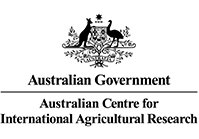
Pacific Pests, Pathogens & Weeds - Mini Fact Sheet Edition
Cowpea leafminer (378)

Summary
- Widespread within Asia. In Oceania, Fiji, Guam, Solomon Islands, and Tonga. Cowpea is the main host, and many other food, ground covers, and fodder legumes.
- Damage: larvae burrow though upper leaf surface making snake-like mines that end in a large blotch. Mature larva red, with brown head. Pupation on crop plants and weeds. Adult dirty-cream, smoky wings, antennae longer than body with turned up ends to wings. Body at steep angle at rest. Pupae survive on plant debris between crops, in soil or on weeds. Impact on cowpea in Fiji unknown.
- Cultural control: avoid overlapping crops; squash mines between finger and thumb or remove infested leaves; collect debris and burn after harvest.
- Chemical control: biorational i) insecticidal soap, white or horticultural oils; ii) botanicals (chillies, neem, derris, pyrethrum); iii) microbials (abamectin, spinosad). Avoid organophosphates and synthetic pyrethroids.
Common Name
Cowpea leafminer
Scientific Name
Phodoryctis caerulea. It was previously known as Acrocercops caerulea, and it has been recorded as Phodoryctis centrometra from Fiji. It is a moth of the Gracillariidae.
AUTHOR Grahame Jackson
Information from Swaine G (1971) Agricultural Zoology in Fiji. Her Majesty's Stationery Office. London; Photos 1-4 Mani Mua, SPC. Sigatoka Research Station, Fiji. Photo 5 Wikipedia. (https://en.wikipedia.org/wiki/Phodoryctis_caerulea).
Produced with support from the Australian Centre for International Agricultural Research under project HORT/2016/185: Responding to emerging pest and disease threats to horticulture in the Pacific islands, implemented by the University of Queensland and the Secretariat of the Pacific Community.
This mini fact sheet is a part of the app Pacific Pests, Pathogens & Weeds
The mobile application is available from the Google Play Store and Apple iTunes.




Copyright © 2020. All rights reserved.
 Pacific Pests, Pathogens & Weeds - Mini Fact Sheet Edition
Pacific Pests, Pathogens & Weeds - Mini Fact Sheet Edition